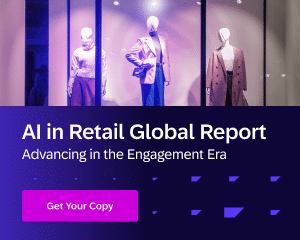What is predictive analytics?
Predictive analytics is a form of data analysis that uses statistical models and machine learning techniques to identify patterns in large datasets. Predictive analytics can be used to forecast future trends and make informed decisions based on historical data.
By leveraging predictive models, organizations can better anticipate customer needs, identify trends, automate decisions, and optimize operations.
It involves applying advanced data analysis techniques such as regression analysis and artificial intelligence to identify and measure the influence of variables on output. Predictive analytics helps businesses make decisions by allowing them to anticipate customer behavior, identify marketing opportunities, understand customer preferences, and segment their markets.
What are the three pillars of predictive analytics?
Predictive analytics is based on three core pillars:
-
Decision Trees:
Decision trees are a type of supervised learning algorithm that uses a tree-like model to make data-driven decisions. They are used to classify, predict, and forecast outcomes by breaking down multiple possibilities into simple decisions.
-
Neural Networks:
A neural network is an artificial intelligence system modeled on the human brain which can be trained to recognize patterns in large amounts of data. A neural network is capable of making accurate predictions and forecasts using deep learning techniques.
-
Regression Analysis:
Regression analysis is a statistical technique used to identify relationships between different variables and predict future outcomes based on those relationships. It’s used to uncover patterns in data which can help power intelligent decision-making.
Predictive analytics vs descriptive and diagnostic analytics
Descriptive and diagnostic analytics are the predecessors to predictive analytics.
Descriptive analytics focuses on using historical data to identify certain patterns and trends. This is commonly used as a reporting tool to demonstrate the performance of marketing campaigns.
Diagnostic analytics goes one step further than descriptive. Instead of simply looking at data, it dives into cause and effect of different elements. Diagnostic analytics is used to find the root causes behind the patterns and trends found in historical data.
Prescriptive analytics brings machine learning and AI into the mix, using historical data to calculate potential future outcomes. This allows businesses to make smart decisions to correct performance issues before they arise.
Six use cases of predictive analytics
-
Sales forecasting:
Companies can use predictive analytics to build accurate models that forecast future sales based on past financial trends. This can help them optimize their supply chain process and inventory levels, and plan promotions tactically.
-
Personalized recommendations:
Businesses can leverage predictive analytics to gain a better understanding of their customers and create unique segments that can be accurately targeted based on past purchases, wants, and needs. These segments can be delivered personalized product recommendations and offers, increasing conversions, repeat purchases, and average order values.
-
Pricing optimization:
Predictive analytics can help businesses adjust prices in real time based on demand, competitor pricing, supply levels, and customer sentiment data points. This helps them maximize profits while still providing competitive pricing to their customers.
-
Reducing churn:
predictive analytics can be used to identify customers that are likely to churn, allowing marketers to target this segment with campaigns designed to entice them back to the store.
-
Upselling and cross-selling:
by analyzing historical sales, purchase, and customer data, predictive analytics can power targeted up-sells and cross-sells tailored to individual customers.
-
Recommending content:
Online entertainment platforms like Netflix use predictive analytics to promote content based on historical viewing data, genre, and other key data points.
By harnessing the power of predictive analytics, you empower your business to make smarter decisions that improve customer experience and drive revenue.
Predictive analytics with SAP Emarsys
SAP Emarsys helps leading brands like Babbel, adidas Runtastic and Nike to get the intelligence and analytics to know what’s working — and the AI insights to know what will work next.




